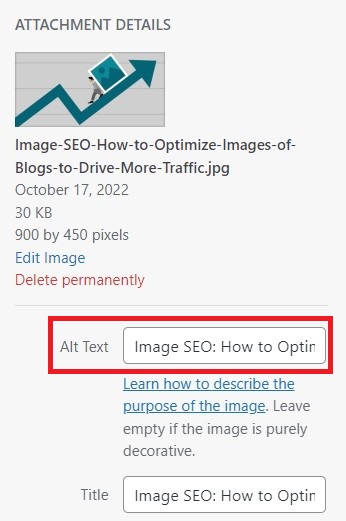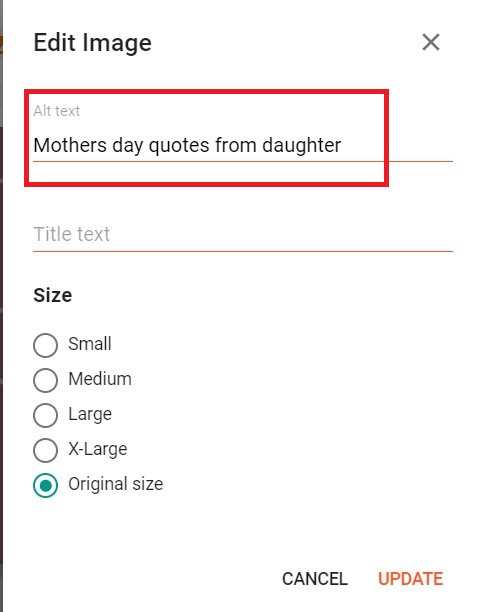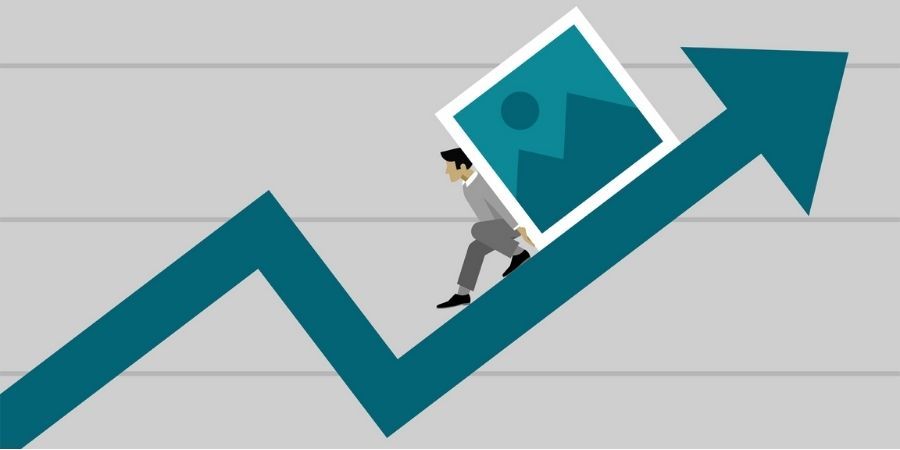It is said — A picture tells a thousand words. The same applies to blog images as well. In blogging, we use photos to make things easy so that our readers can understand things easily. A reader can understand the meaning of photos but have you ever wondered how Google find out what a picture is all about? How does Google know which image is better for the searcher and which is not? How does it know which image to rank at which number?
If we get the answer to these questions, then we can easily rank the images of our blog on a good position in Google search and can get a massive traffic from there. So, let’s know how blog images are ranked in Google and how to optimize images of your blog:
WHAT IS IMAGE SEO?
In addition to text, our blog also contains many photos related to the content. When we perform a Google search, in addition to blog posts, photos are also shown, from which a lot of traffic comes to our blog. Optimizing blog photos in such a way that they appear first in the Google search, is called image SEO.
WHY IS IMAGE SEO IMPORTANT:
Google will show our website or blog on top if we take care about the needs of people more than our own benefit. In simple words, if we give information to people well, then there are chances that Google will give us priority in its search results.
When we include photos in our blog, in a way we are helping people because it makes them easier to understand things. Therefore, including images in the blog is also a kind of SEO activity. But we do not get good organic rankings just by simply uploading photos, but we also have to do SEO of these photos which we call “image SEO” or “image optimization”.
Google can read the text by which it can find out which text content is good and based on that it can rank it. But, this is not the case when it comes to images of the blog.
Google can’t recognize the pictures because as of now it does not have any technology on the basis of which it can find out which picture is better and which is not.
So now the question may arise that how does it rank the images in SERP? For this, Google checks the name of the image, alt-text tag and the website authority, on the basis of which it ranks them in its search. Image SEO is much easier than other SEO and it also gives you many benefits.
BENEFITS OF IMAGE SEO:
Image SEO benefits may include:
- With the help of Image SEO, we can increase the visibility of our blog in search.
- Through Image SEO, we can rank well in Google Images search and get a lot of clicks. Although their CTR is very low.
- By ranking in Google Image Search, we can easily find many less competitive and high search volume keywords with the help of Google Search Console on which we can easily rank by creating blog posts.
HOW TO DO IMAGE SEO:
By now we have come to know what is image SEO and why is it important. Now, let us know how you can do Image SEO in simple steps:
1. Find Right SEO-Friendly Images for Your Blog:
There are tons of photos on the internet, but can we randomly pick any of them and put them on our blog? Absolutely not!!
Because this can spoil the reputation of our blog in the eyes of Google. Then how to find the right images for the blog? There are many such websites on the internet that provide us with lots of copyright-free images which we can use on our blog. Some such websites are:
Apart from this, you can also find royalty free images for your blog by applying the “labelled for reuse” filter in Google Image search.
2. Rename Image File:
When we download or create a photo, image name is like picsart21542.jpg or g-s5143.png. This is not a good filename for SEO so we have to change it. We should give the name the thing on which an image is based.
For example, if you are uploading a picture related to “Study” in your blog, then name is something like study.jpg. If a person searches for keywords like study in Google, then he will see your blog image.
3. Edit Stock Photos:
The pictures that we download from photo websites (such as Pixabay, Pexels) are called stock images. If we use these images directly on our website then it doesn’t give us good rankings because everyone will be using the same photos and they are all same so that Google can not decide which photo to rank first and which one to later.
Therefore, for Image SEO, it is really very important to edit the image, so that Google gives them good rankings. If you have designed an image yourself, then definitely put a watermark of your website on one corner of it. This will benefit you a lot in the long term.
4. Resize Images:
Perhaps you know that Google also checks the loading speed of the websites to rank them. That is, if your website is fast-loading, then it has good chances of ranking on top in Google. The text loads very quickly, whereas the photos and videos take time to load; especially large size photos.
That’s why it is important that we resize the images properly so that our websites do not have too much load and it ranks at the top in Google Image Search.
To resize photos, we can edit them with the help of an appropriate editing tool. Crop, trim them and enlarge them. Apart from this, there are many such websites on the Internet, with the help of which we can do this work more easily. Some of them are:
Apart from this, when we upload them on our blog, we can adjust its size by X-Large, Large, Medium and Small options available in the blogger or WordPress dashboard so that our readers can get a good user-experience.
According to Statista, more than 50 percent of searches on Google are done on mobile devices, so after the blog post is published, confirm that the images you have uploaded on your blog are visible to mobile users correctly. Remember, many people leave our website just because they do not see the images in a proper format.
5. Compress Image Size:
If the photos of the blog are large in size, then they will take time to load. So, it is necessary that we reduce the image size. The work of reducing the size of the image is called “Image Compression”. It is very important for SEO of photos in the blog. There are many websites on the Internet to compress images, some of the major websites are:
Try that the size of most of the images uploaded on your blog should be 100 KB or less.
6. Choose the Right Image Extensions:
There are many image extensions available now-a-days like .jpg (JPEG), .png, .gif, etc. but which one is the best for your blog?
The answer to this question depends on your requirement or need, i.e., what kind of image file do you need. For example, if you have to post a photo on your blog which is very important to be seen clearly, then you can use .png format because it is top in the terms of clarity. Although its file size is very high (generally in MBs), so it takes time to load, which slows down the site speed and has a bad effect on SEO.
On the other hand, if you are using an image that do not need too much clarity, then you can use .jpeg (also called .jpg). Its size is generally in KBs and it loads very quickly.
You can use .gif (Graphics Interchange Format) for animated images. Therefore, according to your need, choose the right image extension or format.
7. Use Image Alt Tag:
As we know that Google cannot recognize images but it has the ability to read and understand text. So, if we want to explain a picture to the Google, then we have to express it in text form. But how can we do that?
Luckily, we have a way to do this, which we call “Image Alt-Text” Tag. With the help of alt-text tag, we can tell Google what a picture is about. For this, follow these instructions:
- A good image alt tag is of 125 words.
- Avoid symbols such as hyphens, underscores in alt tags.
- A good image alt tag should be written as a sentence.
- Whatever language you run the blog in, always write the alt tag in English because Google understands English better.
How to insert image alt-text tag in Blogger and WordPress blogs?
The alt-text (alternative text) tag option is clearly visible while uploading an image in WordPress. In WordPress, after uploading an image, when you click or select that particular image, an option of alt-text tag will be visible in the left of your WordPress dashboard. For reference, see the below image:

When it comes to blogger (blogspot.com), after uploading the image, click on that particular image. It will show a lot of options. In settings, you can change image size and alt-text settings. For reference, see the below image:

8. No. of Images in The Blog:
Many bloggers always think that how much images should be used in a blog. You can use as many images as you want on your blog, but for good SEO, you must put at least 3 images on your blog post.
9. Put Your Best Image First:
By default in Blogspot posts, the first or top photo of the blog is the main photo. Only the top most photo of the blog post appears in the link of our post. Apart from this, Google gives more priority to our main photo in its search results.
That’s why we should post our best and related photo in the top of our blog post.
IMAGE SEO FOR WORDPRESS BLOGS:
Image SEO of WordPress blog is also done in the same way as Blogspot blog does. Although some things are different in WordPress including:
(1) Plugins can help you in optimizing images in WordPress blogs. These Image SEO plugins are:
(2) Apart from this, if your site is on WordPress and you use a lot of images on it, then you can use image sitemap in Google Search Console (google Webmaster). You can submit image URLs in it, this will give good rankings to your blog’s images in the Google search.
Apart from this, there is not much difference between Blogger and WordPress blogs.
FINAL WORDS
Often, we optimize the text in the blog posts but forget the images. But for the growth of the blog, it is necessary that we do SEO of the images as well. In today’s post, we have learned about this. If you have any question or suggestions, please leave in the comment section below.

